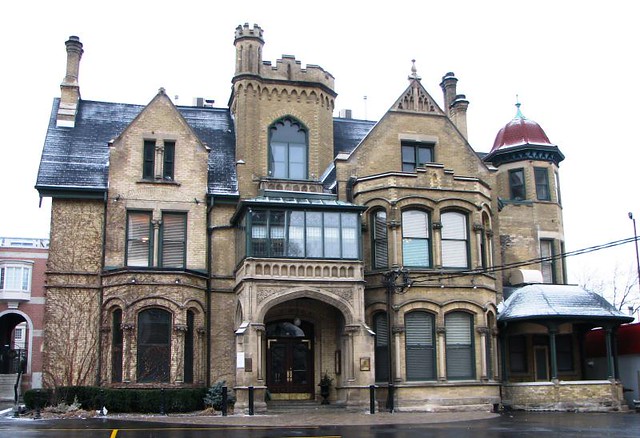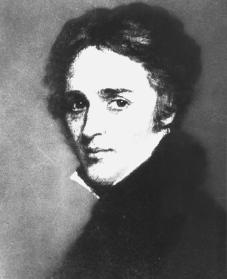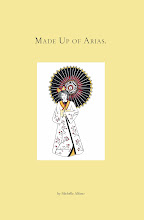Down and Out in Paris and London by George Orwell (First published 1933; republished by Penguin Books, 1940) 190 pages
This book, George Orwell's first full-length work, re-ignited an internal debate I have about how to write about the poor and downtrodden. This has become a persistent theme for me as I try and puzzle out the character of Billy in my new yet to be published novel. In
Vita's Prospects, Billy is an aboriginal man who is mentally ill, homeless, violent and misogynistic ... oh yes, and gay. Talk about asking for trouble as a writer in these politically sensitive times. And yet he haunts me, the way a dead relation or lover might.
How to make Billy real? How to make him - not sympathetic exactly - but written in such a manner that he is seen compassionately and have the reader understand
why he is
what he is? I have no interest in being politically correct but I do want an honest representation of his life. His life, as depicted in my novel, is as important to me as the fate of some of the dearest people in my life. What he suffers and endures in the book I feel acutely.
So I turn to Orwell, a hero of mine, who had more than a little experience with living in the rough and amongst the poor.
As Orwell makes his way through Paris and London he assumes various guises. His observations are uncensored and keen and even bigoted at times - castigating the perceived parsimony of Jewish vendors in anti-Semitic slurs or the unsavory aspects of a particularly unpleasant unfortunate he meets in his travels. Of Paris' slum inhabitants he concludes that poverty "frees them from the ordinary standards of behavior" and he cites fairly odd and unconscionable behavior. Orwell is unsentimental and sharp-eyed about the poor. He does not elevate the poor to sainthood but keenly seems to feels the destitution of their day to day existence because he actually lived it for years at a time.
In Paris, he passes the majority of his time with Boris, a former Russian military man disenfranchised by the
Russian Revolution of 1917 and now reduced to waiting (as in being a waiter) in some of the most forlorn cafes and restaurants in Paris. They sell their clothes, and every material possession they own, to buy bread and drink to tide them over from day to day. They go days without eating or eating only a scrap of bread. They wander from one eating establishment to another searching for employment. Boris is lame and unlikely to find work. Orwell is a foreigner, although being English in Paris does have a bit of a cachet for some it seems. Both suffer rejection upon rejection for weeks on end living hand to mouth in utter destitution as Boris chases down one hair-brained scheme after another which lead to nothing. One plan involves petitioning former mistresses for financial aid.
When Orwell finds work it is in a vast hotel with hundreds of employees, simply labeled Hotel X in the book, as a
plongeur, a position considered to be the lowest of the low among hotel workers and as Orwell puts it "a slave of the modern world...he is no freer than if he were bought and sold." Washing dishes, clearing the waste, cutting up vegetables, making coffee and tea, working horrendously long hours without breaks or food or a place to sit down for a rest, cursed and vilified by chefs, waiters, managers - anyone with status above him. The cellars of this vast institution are dark, dirty, chaotic and even sometimes violent as tempers flare between overworked and exploited workers scrambling to complete their given tasks. All those stereotypes about working in a restaurant under a tyrannous and abusive chef are magnified tenfold.
Of these abuses after a hundred pages or so Orwell concludes that the job is useless and should be eliminated. If the richer populace did not decide to visit "smart" restaurants and hotels, a "useless luxury", there would be no need for the
plongeurs to suffer so. A fanciful thought - may as well wish for the moon, I thought as I read this, as expect the rich and affluent to live without luxuries. Where there is money, there will be a host of services, some essential, some frivolous, to cater to them.
But at least he and Boris are able to make a living wage, that is, until Orwell decides he wants to leave for England where he is promised a job caring for an "imbecile". This job appears like a heavenly reprieve from the suffering he endured in Paris. Once he arrives in London, the job does not come about as quickly as he had hoped so he is cast adrift scrambling to find food and accommodations - quickly devolving from working poor (
plongeur) to tramp in the space of days.
He finds himself looking for shelter in "spikes" also known as casual wards, our equivalent of homeless shelters. However, the law stipulates that he may only stay in one spike one day per month so he is forced to tramp all over the city from spike to spike seeking shelter and food every day, traveling miles and miles with Paddy, a displaced Irishman with a penchant for collecting discarded cigarette butts for the miniscule amount of tobacco they yield. If he tries to violate this law he will be thrown in jail.
Experiences vary but generally in order to receive food and shelter the men are subjected to enforced exposure to religious instruction, prayer or hymn singing - literally performing for one's bread in order to survive. The worst examples cited appear to be those spikes run by the Salvation Army which try and instill a military like precision to the running of the spikes. Dirty beds are infested with bugs. Food (usually bread and margarine, thin soup) is inedible, tea undrinkable, treatment is harsh. Overcrowding, violence, sometimes homosexual overtures upon the unwilling, he details all. Even those who travel the tramp circuit despise each other for their misfortunes.
In one vivid scene, he recounts the group of homeless men becoming raucous and disrespectful during a church service that they are forced to attend. Largely, the men are docile and cowed by their circumstances when facing authority - here, in this scene, they are rebellious and rude and on the edge of revolution it seems.
As a natural born reformer, Orwell cites remedies to aid these men which seem possibly workable and sensible. The men seek employment, he argues. Their lack of employment degrades them and they feel it keenly. If these shelters were set up with proper kitchens and gardens the men could work in exchange for accommodations and stay for extended periods instead of being turfed out after one night.
Orwell was an idealist, not a foolish one, but one who tried to offer practical, concrete suggestions about how to improve the plight of the poor. He assumes that most would agree with the logic of his sensible arguments. The truth is, now and likely almost eighty years ago when this was written in the early 30s, people have little interest in situations in which they cannot imagine themselves. They may have sympathy but little inclination to change what they perceive as something that is not their problem.
The origins of the character Billy in Vita's Prospects:
Many years ago, when I lived in the downtown core in the first home that I shared with my husband, my sister and I were strolling near our condo close to the St. Lawrence Market. We passed this young Indian man who was crouched beside a building, obviously in pain, who was begging for money. He was youngish with long sandy coloured hair, a mustache, likely bi-racial, and he did not look like he had been on the streets for very long. He had on a decent looking carmel coloured jacket and some sort of dark stoned necklace around his neck. I couldn't tell if he was ill or suffering from withdrawal - he had trouble speaking or didn't want to talk to us (that could have been it too).
For me it was bit of shock as he resembled, quite a bit, a boy named R who I had known when I was seventeen and who had lead a pretty dicey life in Hamilton where I grew up - short term in prison for various ill fated criminal ventures, getting involved in violent altercations on the street, stealing merchandise, womanizing - and then R eventually died of a drug overdose, likely accidental, under mysterious circumstances at a friend's house. But it struck me, what if R had lived, would he have ended up like this man on the street?
My sister and I felt at a loss as to how to help. We went to the nearest supermarket a few doors away and bought him a drink and some food. Then we kept walking - we thought
what can we do? We walked right past the
Fred Victor Mission on Jarvis St. which was near my home and stopped inside and spoke to a man there. He was a little condescending when we explained the situation; no doubt he had other more pressing concerns. He said something to the effect that: "It's very nice that you girls are concerned about this guy but there is really nothing you can do and neither can I."
Frustrated, we left and walked back to where we had last seen this young man and he was gone. And I never saw him again.
Vita's Prospects is an imagined continuation of what this man's life would be like on the streets set in the course of one June day as encountered by Vita.
More on Billy and Vita anon ...













 "You carry on, do what you have to do - the rest is worthless. Because the threat isn't always a bullet between the eyes ... They take you slowly, one layer at a time, till you find yourself naked and alone and you start believing you're fighting something that does not exist ..."
"You carry on, do what you have to do - the rest is worthless. Because the threat isn't always a bullet between the eyes ... They take you slowly, one layer at a time, till you find yourself naked and alone and you start believing you're fighting something that does not exist ..."








